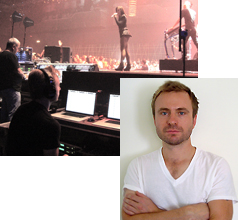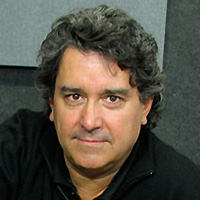Mention “backing tracks” and it conjures up images of infamous acts such as Milli Vanilli or Ashlee Simpson lip syncing to their songs in concert. But the reality is that backing tracks have actually been around for years and play a significant part in a surprising number of shows.
The most famous example is Queen performing Bohemian Rhapsody live – magically delivering a 40-voice choir with four people on stage. Queen did not hide the technology, they embraced it.
Backing tracks are often thought of as replacement tracks for lead singers during difficult passages or maybe as part of a pop artist dance routine. They are, in fact, rarely used for lead vocals, but rather are deployed to bring “more” of the original recording production value to a live show.
In other words, backing tracks can provide a fuller musical experience, as if listening to a live version of the record, enhancing vocal harmonies, percussion, rhythm guitar tracks, orchestra or even a full choir.
This is confirmed by one of the pioneers in the world of backing tracks, Mike McKnight, who has worked with Mariah Carey, Madonna, Jennifer Lopez, George Michael, Roger Waters and many others.
“We rarely if ever replace lead vocals,” McKnight recently told me. “It’s usually for repetitive parts that the musicians do not want to play, click tracks and orchestration.” Another obvious advantage of using backing tracks is lower production costs due to less people traveling.
Although setups differ depending on the size of the production, the backing track playback system is usually controlled from the stage by a keyboard player, a playback technician, or sometimes from the front-of-house position by the mix engineer. A playback system can be as simple as a stereo track, or as elaborate as 64 full tracks with each violin, cello and flute having its own channel.
More Control
The benefit of having discrete tracks comes down to control. Just like having individual microphones on each drum of a drum kit, having individual channels assigned for playback provides the house engineer with complete control over how each instrument will translate through the PA system in a given venue.
Morten krog Helgesen is also a backing track expert, and has worked with Rihanna, Lady Gaga, Enrique Iglesias, Eminem and Will.I.Am, among others.
“I tend to favor a dual laptop setup for the flexibility, portability and ease of use,” he notes. “Two MacBook Pros with SSD drives, a couple of Motu Ultralites, and a Radial SW8 gets you a long way. I try to keep backing tracks down to 12 if at all possible. This usually includes drum tracks, orchestration, backing vocals and SMPTE.”
Further, Helgesen likes to sum everything down to eight outputs: stereo drums, stereo instruments plus effects, stereo BGVs, click, and SMPTE. “More outputs than that really creates more of a headache for the sound guys,” he explains. “Less is more.”
McKnight’s setup varies depending on the artist: “I have three rigs: A Mac-based 16-in/8-out TV rig that has two MOTU Ultralites and a Radial SW8 switcher. A standard touring 32-in/16-out rig that is built with four MOTU Ultralites and two Radial SW8s. On the really big tours, like Roger Waters’ The Wall where we have surround sound and effects, I use a 72-in/24-out setup.”

















